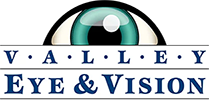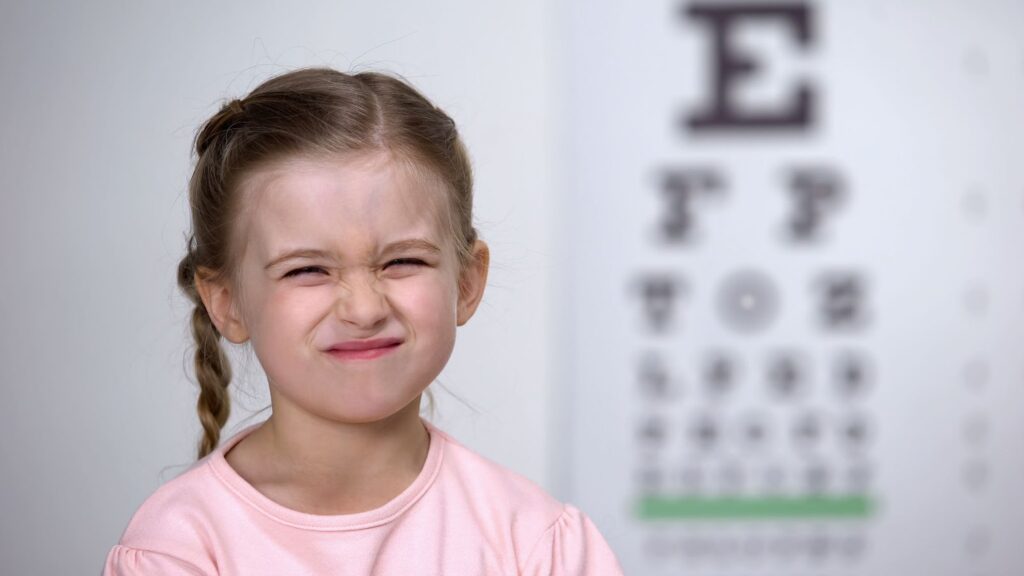The prevalence of myopia, or nearsightedness, is on the rise. It’s estimated that by 2050, half of the global population will be affected by this condition. For many, dealing with myopia means wearing glasses or contact lenses daily.
But what if there were more effective ways to manage myopia and myopia progression in children beyond traditional glasses? Effective myopia management treatment options can include orthokeratology lenses and atropine eye drops. A children’s eye exam can help determine what methods will benefit a child most.
What is Myopia?
Myopia is a common refractive error where distant objects appear blurry, while close ones are clear. Myopia occurs due to a long eyeball or an overly curved cornea, causing light to focus in front of the retina (the light-sensitive tissue at the back of the eye) instead of on it.
This condition usually develops in early childhood and can progress as the child grows and stabilizes around early adulthood. Symptoms can include:
- Blurry distant vision
- Squinting to see clearly
- Eye strain
- Eye fatigue
- Sore eyes
Factors Contributing to Myopia
Several factors contribute to the development and progression of myopia in children. Genetics plays a significant role; if one or both parents are myopic, their children are more likely to develop the condition. Environmental factors, such as prolonged near work (like reading or using digital devices) and insufficient outdoor time, also contribute to myopia development.
Impact of Myopia on Eye Health
While myopia primarily affects vision, it can have broader implications for overall eye health. When myopia progresses or worsens, it can lead to high myopia and frequent prescription updates. High myopia increases the risk of serious eye conditions such as:
- Retinal detachment: High myopia and longer eye length can cause retinal stretching, tearing, and detachment.
- Myopic macular degeneration: Severe myopia causes the macular responsible for central vision to stretch and become damaged.
- Glaucoma: Eye diseases that result when high pressure causes damage to the optic nerve at the back of the eye.
- Cataracts: Occurs when the natural lens in the eye becomes thick and cloudy.
Traditional Myopia Management
Glasses are the most common method for correcting myopia to provide vision clarity. However, they can have limitations as they don’t prevent myopia from progressing.
Contact lenses offer a convenient alternative to glasses to correct myopia as they provide a wider field of vision. However, traditional contact lenses don’t prevent myopia from progressing.
Effective Myopia Management Treatment Options
Every individual’s eyes are unique, and what works for one person may not work for another. Consulting with your eye doctor means you’ll receive tailored advice and treatment options that suit your specific needs.
Non-surgical treatments, such as orthokeratology, atropine eye drops, and specialized lenses are more effective treatment options to control myopia progression.
Orthokeratology (Ortho-k)
Ortho-k involves wearing specially designed rigid gas-permeable contact lenses overnight. These lenses gently reshape the cornea, temporarily correcting myopia so that children can see clearly without glasses or contacts during the day. Ortho-k is particularly effective for children and teenagers, as it can slow myopia progression during their developmental years.
Atropine Eye Drops
Atropine eye drops, used in low concentrations, have been shown to slow myopia progression in children. The exact mechanism is not entirely understood, but atropine is believed to reduce the eye’s growth rate. This treatment is often recommended for children with rapidly progressing myopia and can be used alongside other myopia management strategies.
Specialized Lenses
Lenses to correct myopia are different from specialized lenses used for myopia control. These glasses and contact lenses have multiple focusing powers to see clearly and help slow myopia progression.
Lifestyle Changes to Support Myopia Management
Research suggests that spending more time outdoors can significantly reduce the risk of developing myopia. Natural light and the ability to focus on distant objects help maintain healthy eye development.
Limiting screen time and other near-focused work, especially for children, is crucial in preventing myopia progression. Encourage breaks during prolonged near work and promote alternative activities that don’t involve screens.
Incorporating healthy eye habits into daily routines can make a significant difference. These habits can include proper lighting when reading, and maintaining an appropriate distance from screens and books.
Regular eye exams are essential for monitoring eye health, vision changes, and early detection and effective management of myopia. Your eye doctor can provide personalized treatment plans and adjust them based on your needs and progress.
Preserving Your Child’s Vision
Effective myopia management goes beyond just wearing glasses or contact lenses. With emerging treatments like orthokeratology, specialized lenses, and atropine eye drops, coupled with lifestyle changes and regular eye exams, there are more options to manage myopia effectively.
If you’re concerned about myopia or vision changes in your child and want to explore personalized treatment options, book an appointment with Valley Eye & Vision Clinic. Your eyes deserve care, and with the right approach, we can help your child enjoy clear vision for years to come.


